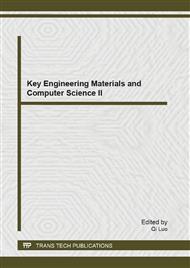p.370
p.375
p.378
p.384
p.390
p.396
p.403
p.410
p.415
Analysis of Data-Driven Prediction Algorithms for Lithium-Ion Batteries Remaining Useful Life
Abstract:
As one of the most widely used energy storage systems, lithium-ion batteries are attracting more and more attention, and the estimation of lithium-ion batteries remaining useful life (RUL) becoming a critical problem. Generally, RUL can be predicted in two ways: physics of failure (PoF) method and data driven method. Due to the internal electro-chemical reactions are either inaccessible to sensors or hard to measure; the data-driven method is adopted because it does not require specific knowledge of material properties. In this paper, three data-driven algorithms, i.e., Support Vector Machine (SVM), Autoregressive Moving Average (ARMA), and Particle Filtering (PF) are presented for RUL prediction. The lithium-ion battery aging experiment data set has been trained to implement simulation. Based on the RUL prediction result, we can conclude that: (1) ARMA model achieved better result than SVM, however, the result shows a linear trend, which fail to properly reflect the degradation trend of the battery; (2) SVM often suffers from over fitting problem and is more suitable for single-step prediction; and (3) PF approach achieved a better prediction and reflected the trends of degradation of the battery owing to its combined with specific model.
Info:
Periodical:
Pages:
390-395
Citation:
Online since:
July 2013
Authors:
Price:
Сopyright:
© 2013 Trans Tech Publications Ltd. All Rights Reserved
Share:
Citation:


